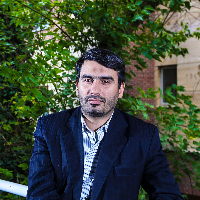An evolutionary analysis of concepts and spatial patterns of mosques in the fourfold Iranian architecture periods
Author(s):
Abstract:
Though the Iranian mosques with all their diversities are among the most important symbols and honors of Islamic civilizations، but there are different opinions about the rate of their compliance with Islamic original values. These rates of agreements which have different features differ، such that in some periods، they are closer to the Islamic concepts and in some period، they have distanced from it. For having a comparative study of this issue، and using the basic concepts of Islamic mysticism such as metaphor، transcendence، beauty and glory، this article deals with the conceptual type studies of mosques and introducing the features of each type. This article also aims to study these concepts and explain them in a different style of Iranian- Islamic architecture (Khorasani، Razi، Azeri and Isfahani) in order to be able to find a way to have a proper use of historical models for contemporary mosques by detachment of contextual and physical values of historical periods. In the first step، using a logical method، the conceptual foundations of mosques have been described، and in the second step، using an evolutionary historical research method، the evolution course of the characteristics related to each concept have been studied during the style changes of mosques in Iran. Result show that from the dimension of simile and purification، the mosques of early ages have been more transcendental and functional، and in later periods with the growth of metaphoric imagination، the mosques have moved towards semiology and decoration. This issue continued up to the Azari age which is climax of simile and symbolic imagination and by the Safavid period، it reached to a balance between simile and purification. From the viewpoint of beauty and glory، a middle balance is observed between beauty and glory in most of the periods. At the same time، it can be claimed that to some extent، the early mosques were more glorious due their extreme simplicity and the Azari mosques were more beauty oriented due to extremism in decoration. In very rare cases in Azari and Safavid ages، some mosques can be named that out of balance limit، have an extreme state in beauty and metaphor.
Keywords:
Mosque , Beauty , Glory , Simile , Transcendence
Language:
Persian
Published:
Journal of Studies On Iranian - Islamic City, Volume:4 Issue: 13, 2014
Page:
15
magiran.com/p1304547
دانلود و مطالعه متن این مقاله با یکی از روشهای زیر امکان پذیر است:
اشتراک شخصی
با عضویت و پرداخت آنلاین حق اشتراک یکساله به مبلغ 1,390,000ريال میتوانید 70 عنوان مطلب دانلود کنید!
اشتراک سازمانی
به کتابخانه دانشگاه یا محل کار خود پیشنهاد کنید تا اشتراک سازمانی این پایگاه را برای دسترسی نامحدود همه کاربران به متن مطالب تهیه نمایند!
توجه!
- حق عضویت دریافتی صرف حمایت از نشریات عضو و نگهداری، تکمیل و توسعه مگیران میشود.
- پرداخت حق اشتراک و دانلود مقالات اجازه بازنشر آن در سایر رسانههای چاپی و دیجیتال را به کاربر نمیدهد.
In order to view content subscription is required
Personal subscription
Subscribe magiran.com for 70 € euros via PayPal and download 70 articles during a year.
Organization subscription
Please contact us to subscribe your university or library for unlimited access!


